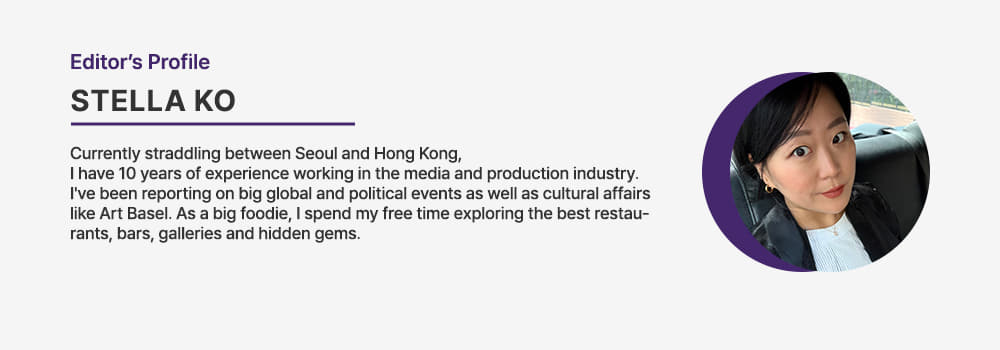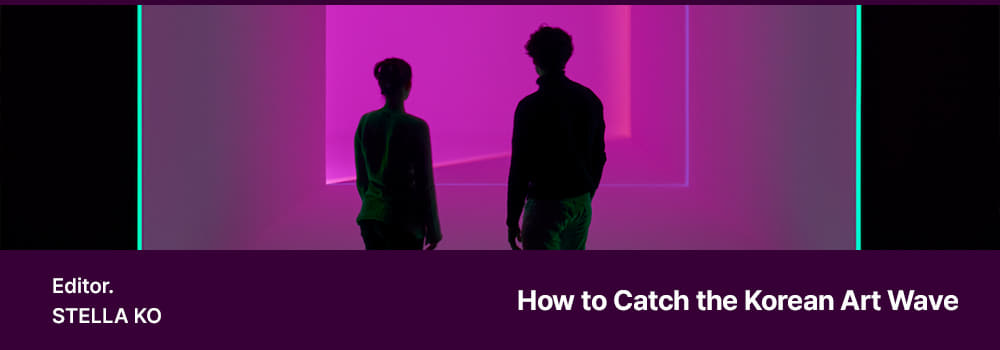
September transforms Seoul into a global art capital, even after the Frieze Seoul and Kiaf (Korean international art fair) tents come down. The city’s galleries and museums answer the international surge with heavyweight retrospectives, special exhibitions, and sharp group shows.
"In terms of the number of galleries and museums, Korea has a solid foundational art infrastructure, which makes me believe it could become a hub for Asian art," says Eunice Jung, Director of Kiaf, “September is also a particularly beautiful season in Korea, making it an ideal time for international tourists and collectors to visit."
Use this guide to navigate the scene across three main art districts of Seoul–Samcheong-dong, Hannam, and Gangnam–with targeted stops of my personal favorite shows I’ve seen this month you can use through the month and beyond.
Samcheong-dong (and wider Jongno)
In my opinion, this is the city’s most picturesque art corridor, where hanok alleyways and rooftops meet contemporary glass façades. Narrow lanes wind past tea houses, cafés, and craft boutiques. It’s walkable, steeped in tradition, and home to Seoul’s flagship museums and decades-old galleries.
National Museum of Modern and Contemporary Art: Kim Tschang-yeul (on view until December 21, 2025)
(This venue is affiliated with the Seoul Arts Tourism Alliance (SATA).)
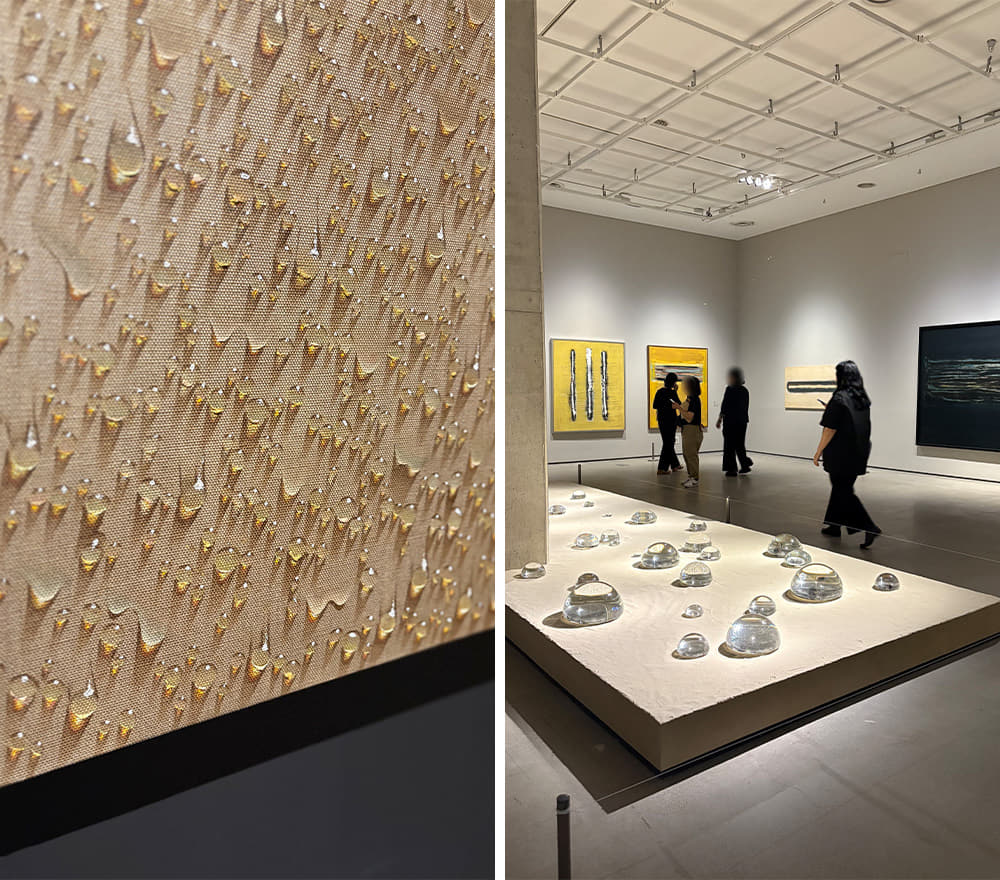
The central landmark on Samcheong-ro—where a cluster of galleries from Gallery Hyundai to Hakgojae line the street—is the MMCA, which anchors the country’s institutional landscape. Its curatorial weight has ranged from the blockbuster exhibition of former Samsung chairman Lee Kun-hee’s personal collection, which drew around 250,000 visitors, to the current major retrospective of master Kim Tschang-yeul, the first since his passing in 2021.
The exhibition begins with this writing on the wall:
“Sixty of my 120 middle school classmates were killed during the Korean War. I imagined those wounds as bullet holes in the flesh—and painted Waterdrops. That was the origin.”
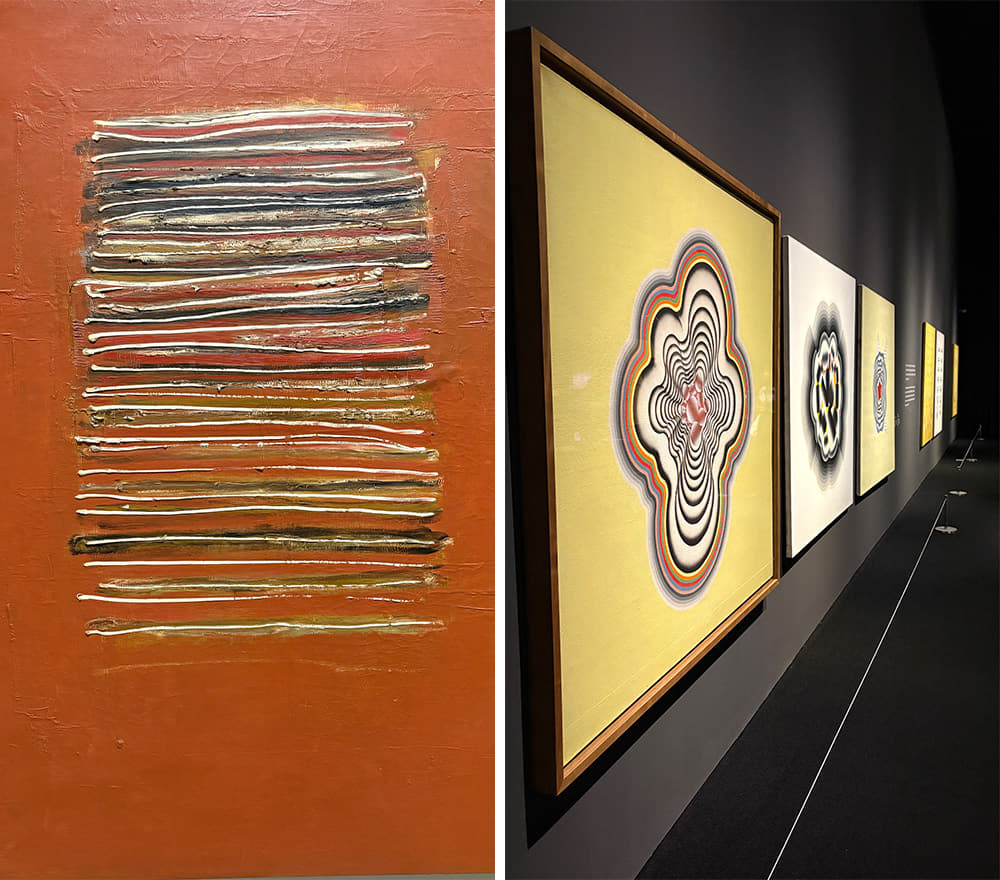
His iconic waterdrops are recognised globally, but what struck me most was their conceptual depth: trauma, discipline, and hard-won serenity. My heart ached throughout the show as cries of war seemed etched into the canvas, like scars of tank treads or bullet holes.
National Museum of Modern and Contemporary Art, Seoul
 30, Samcheong-ro, Jongno-gu, Seoul
30, Samcheong-ro, Jongno-gu, Seoul
 Mondays, Tuesdays, Thursdays, Fridays, and Sundays 10:00 - 18:00 (KST)
Mondays, Tuesdays, Thursdays, Fridays, and Sundays 10:00 - 18:00 (KST)
Wednesdays & Saturdays 10:00 - 21:00 (KST)
* Special Night Exhibition 18:00 - 21:00 (KST)
 Subway Line 3 Anguk Station Exit 1,764m
Subway Line 3 Anguk Station Exit 1,764m
Kukje Gallery: Louise Bourgeois & Gala Porras-Kim (both on view until October 26, 2025)
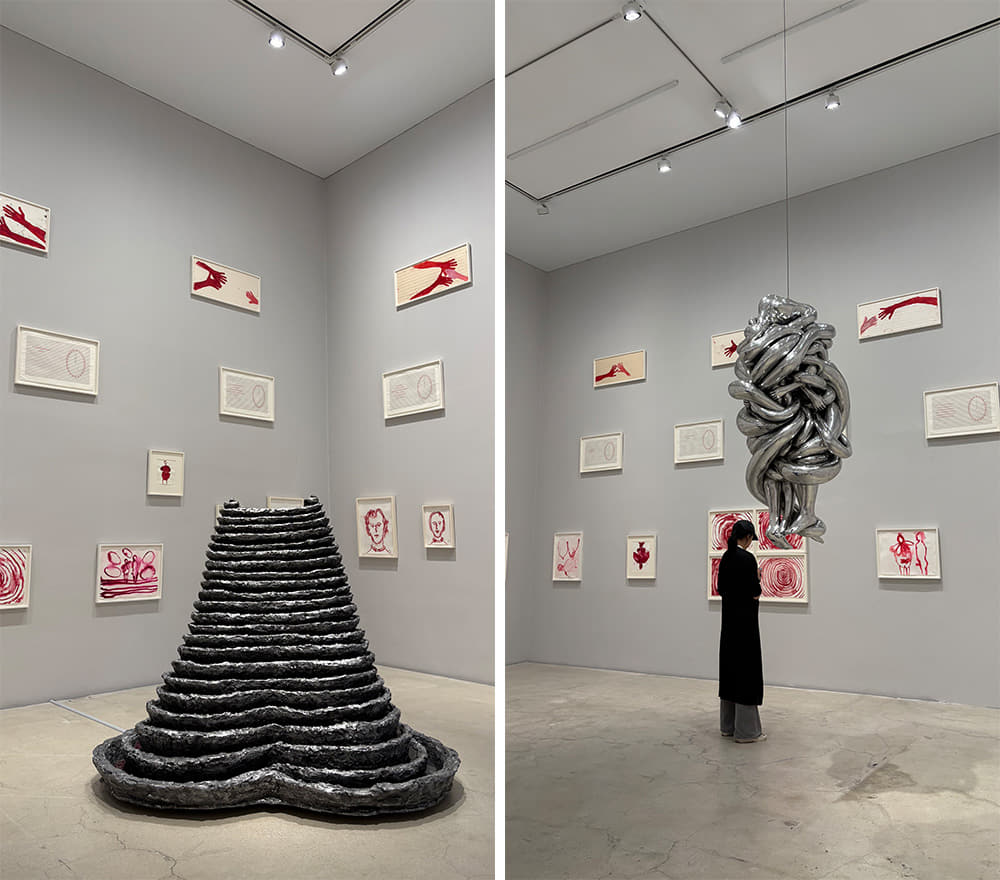
Renowned French-American artist Louise Bourgeois’ Rocking to Infinity spans the last two decades of her career, with sculptures and works on paper that trace tenderness, time, and the bonds that scaffold a life. The title—drawn from the artist’s own writing—conjures a mother rocking a child to sleep: security, togetherness, and care made architectural. I stepped into the room and it swallowed me whole. Pink and red works on paper wrap the entire space to form an immersive environment, while three major sculptures anchor the center like monuments.
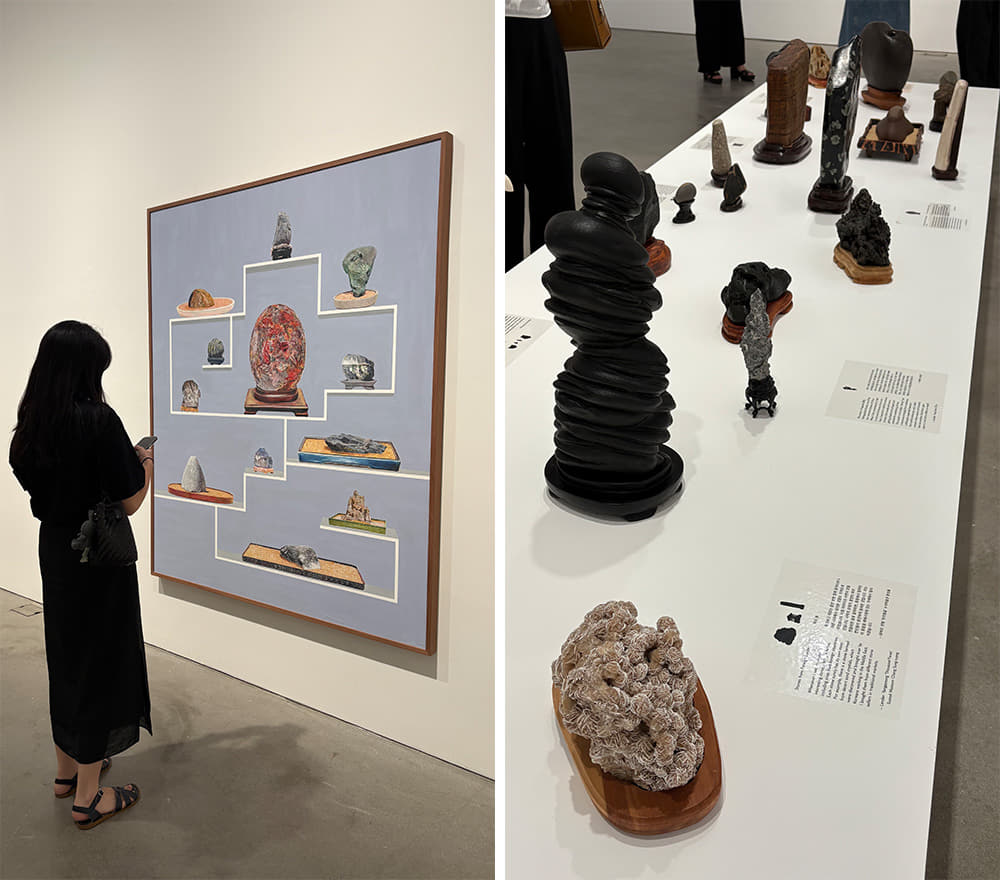
In another building at Kukje, artist Gala Porras-Kim interrogates how institutions classify and preserve objects, revealing the hidden logics that shape meaning. The front room is devoted to drawings made with graphite-soaked fabric and an industrial dehumidifier that releases moisture over time. Drips form patterns on floor panels—climate, season, and foot traffic become collaborators, and the gallery itself leaves a trace. The rear room blew my mind the most; to be frank, I think I stood there with my mouth open for half an hour. Six drawings reimagine suseok (viewing stones) and their aesthetic taxonomies—from “balanced stones” and “animal-shaped stones” to the speculative “extraterrestrial stones.”
Kukje Gallery
 100-200 54, Samcheong-ro, Jongno-gu, Seoul
100-200 54, Samcheong-ro, Jongno-gu, Seoul
 Monday - Saturday 10:00 - 18:00 (KST)
Monday - Saturday 10:00 - 18:00 (KST)
Sundays & National Holidays 10:00 - 17:00 (KST)
 Subway Line 3 Anguk Station Exit 1, 812m
Subway Line 3 Anguk Station Exit 1, 812m
Gallery Chosun: Min Sunghong, Flow of Debris (on view until October 26, 2025)
As a continuation of the legacy established by Chosun Gallery, founded in 1971 as Korea's second-oldest art gallery, Gallery Chosun has been a significant presence in the Korean art scene.
“Our programme has always centred on Korean artists and the Korean art scene,” says COO Yeo Junsoo, “but I’m curious how overseas visitors will respond when they encounter this context.”
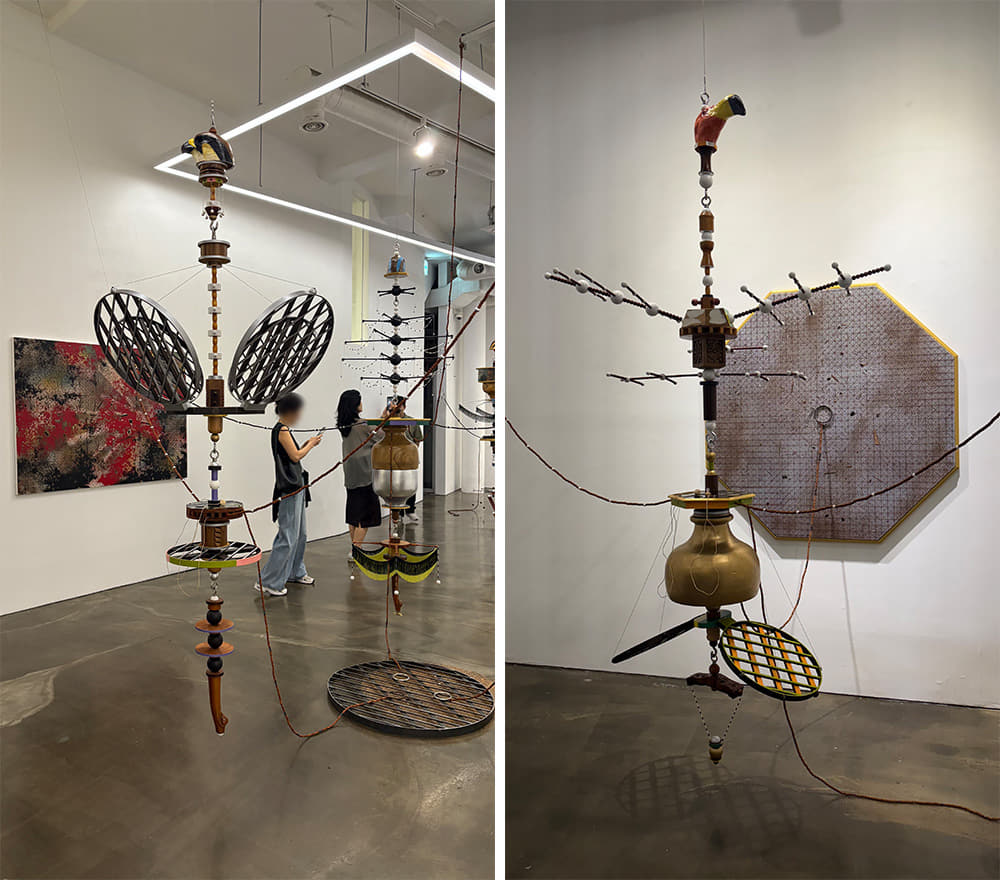
Their new show is representative of the direction the gallery is taking, to support local contemporary talents. When I walked in, I felt as if I was walking into a stage full of props. From furniture to objects, the artist gathers and chips what’s left behind and stitches them together. The title “Flow of Debris” says it all: fragments in motion, echoing the artist’s long fascination with unseen forces and social networks.
Gallery Chosun
 64 Bukchon-ro 5-gil, Jongno-gu, Seoul
64 Bukchon-ro 5-gil, Jongno-gu, Seoul
 Tuesday- Sunday 10:30 - 18:30 /Closed on Mondays
Tuesday- Sunday 10:30 - 18:30 /Closed on Mondays
 Subway Line 3 Anguk Station Exit 2, 582m
Subway Line 3 Anguk Station Exit 2, 582m
Ilmin Museum of Art: Figuration Circuits (on view until October 26, 2025)
(This venue is affiliated with the Seoul Arts Tourism Alliance (SATA).)
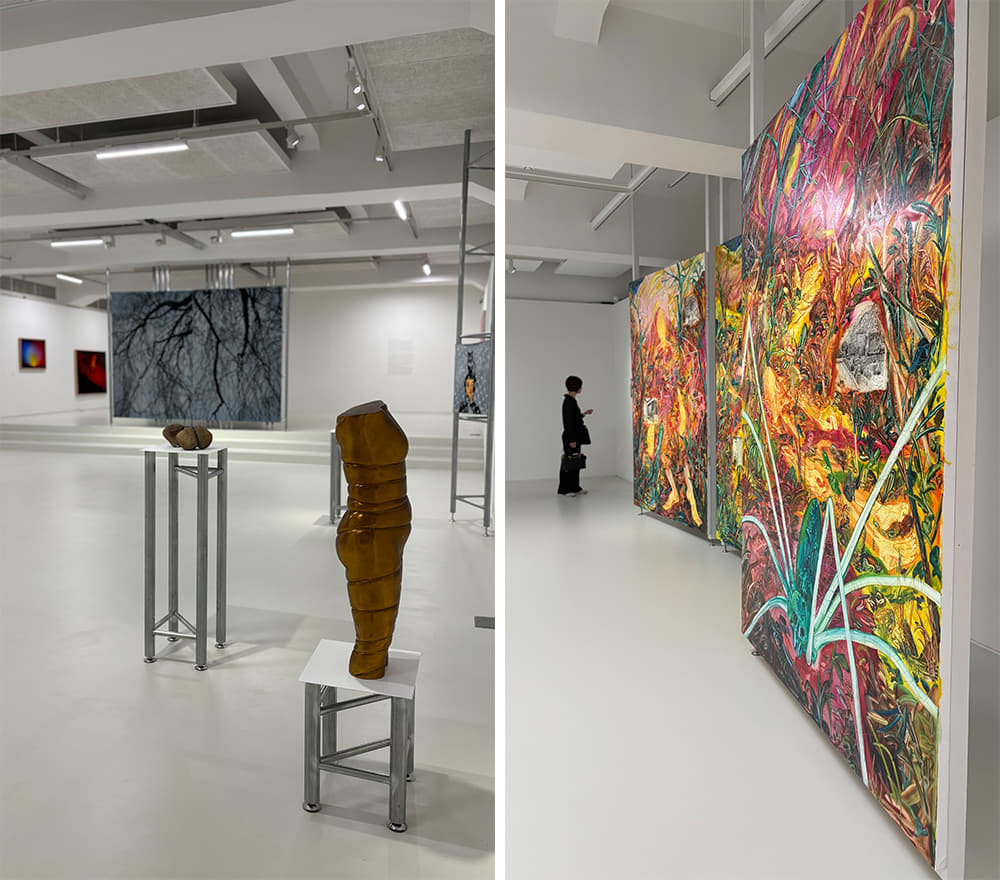
The museum’s new group show features 98 works by 17 artists, including selections from its permanent collection. The exhibition begins with works from the 1970s, as the Dansaekhwa movement was waning, and moves into the 2000s with vibrant contemporary landscapes. My favourite was Park Gwangsoo’s vivid paintings, where lines play a central role in creating multi-layered outlines, textures, and structures.
The exhibition spans three floors, so allow for plenty of time to explore. And don’t miss Café Ima on the ground floor—it serves excellent food and drinks, from fresh tomato juice to homemade hamburg steak, perfect for anyone who likes to carb-load before a long gallery walk.
Ilmin Museum of Art
 152, Sejong-daero, Jongno-gu, Seoul
152, Sejong-daero, Jongno-gu, Seoul
 Daily 11:00 - 19:00 KST /Closed on Mondays
Daily 11:00 - 19:00 KST /Closed on Mondays
 Subway Line 5 Gwanghwamun Station Exit 5, 16m
Subway Line 5 Gwanghwamun Station Exit 5, 16m
Hannam area is Seoul’s global village with embassies, flagship stores, entertainment agencies and glassy residencies. Here, art also comes in big architectural gestures.
Leeum Museum of Art: Lee Bul: From 1998 to Now (on view until January 4, 2026)
(This venue is affiliated with the Seoul Arts Tourism Alliance (SATA).)
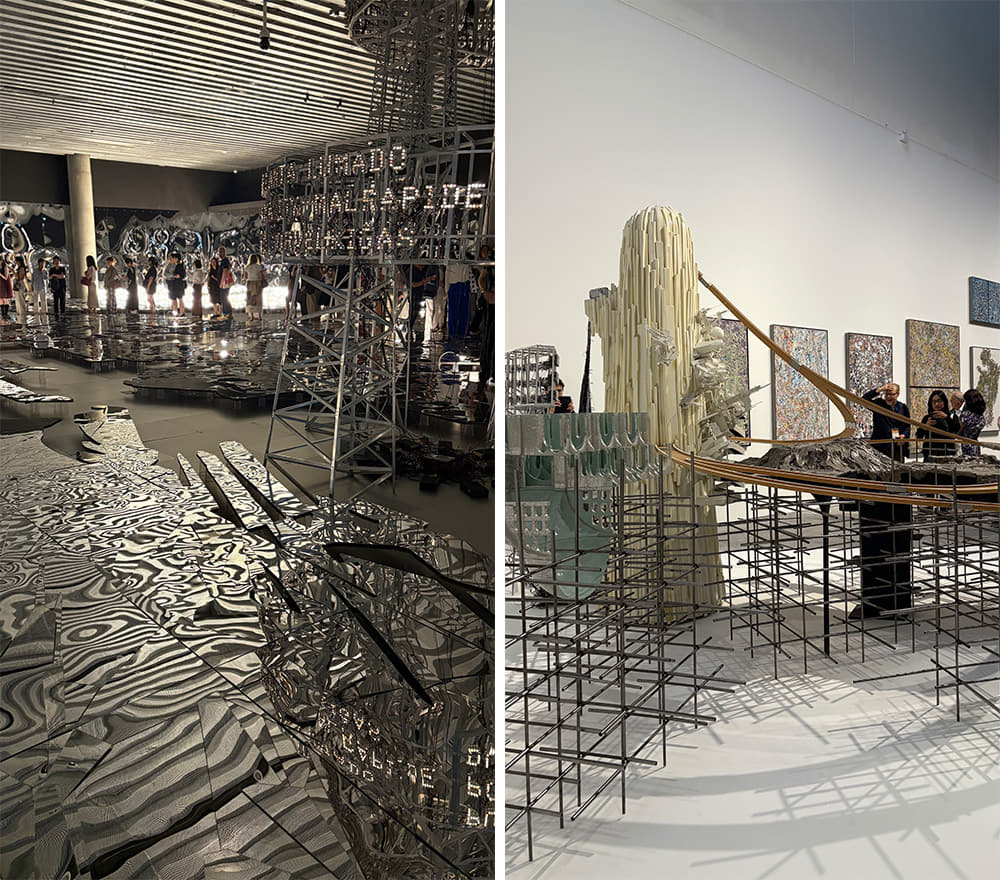
Lee Bul is one of the most influential figures in Korean contemporary art and her popularity was palpable at the opening reception I attended. This major survey of her works is a great chance to immerse and reflect, quite literally, as the first floor of the exhibition is filled with warped and broken mirrors. Over the past four decades, Lee's work has been investigating the shifting relationships between body and society, humanity and technology, nature and civilization, as well as the mechanisms of power that shape them. From collages made with velvet and mother of pearl to mirrored mazes, the show brings together approximately 150 works of Lee Bul.
Leeum Museum of Art
 60-16, Itaewon-ro 55-gil, Yongsan-gu, Seoul
60-16, Itaewon-ro 55-gil, Yongsan-gu, Seoul
 Tue-Sun 10:00 - 18:00 /Closed on Mondays
Tue-Sun 10:00 - 18:00 /Closed on Mondays
 Subway Line 6 Hangangjin Station Exit 1, 399m
Subway Line 6 Hangangjin Station Exit 1, 399m
Pace Gallery Seoul: James Turrell, The Return (on view until September 27, 2025)
Turrell was a key member of the California Light and Space movement and he’s now famous for his immersive installations that almost feels dreamy. This is the artist’s first solo exhibition in Seoul since 2008, organised as part of Pace’s 65th anniversary.
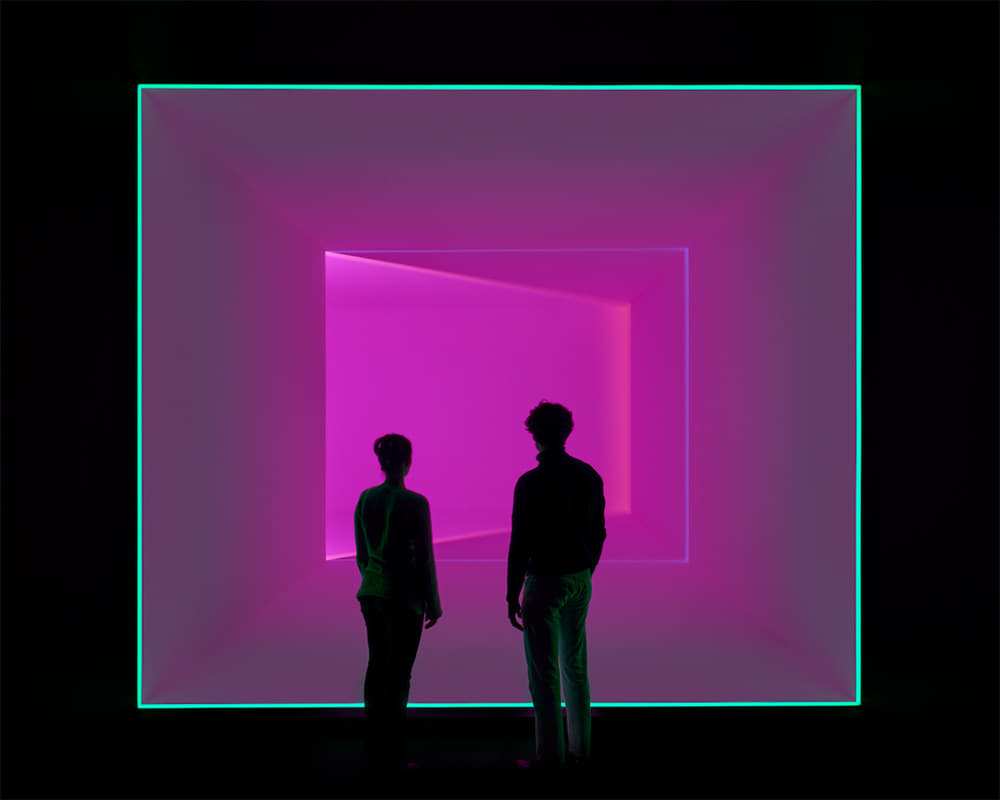
© James Turrell/Pace Gallery. Photo byKyle Knodell
A fair warning that you have to book ahead as the experience is carefully curated for a limited number of people for optimal viewing experience. Turrell’s new site‑specific Wedgework is tunnel vision becoming space; I have no idea what this means; it feels like there is a word or two missing here that would make this make sense and I left speaking more softly, as people do coming out of chapels.
Pace Gallery Seoul
 267 Itaewon-ro,Yongsan-gu,Seoul
267 Itaewon-ro,Yongsan-gu,Seoul
 Tue-Sat 10:00 - 18:00 /Closed on Mondays/Sundays
Tue-Sat 10:00 - 18:00 /Closed on Mondays/Sundays
 Subway Line 6 Hangangjin Station Exit 1, 185m
Subway Line 6 Hangangjin Station Exit 1, 185m
Amorepacific Museum of Art: Mark Bradford: Keep Walking (on view until January 25, 2026)
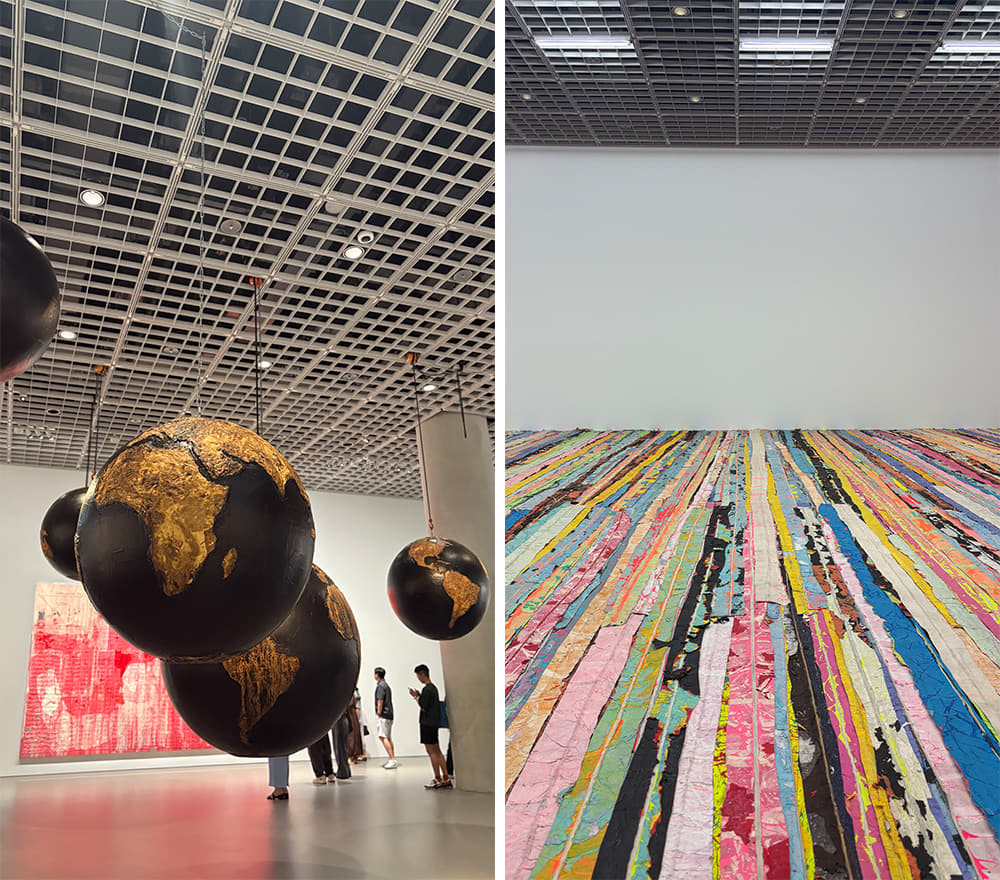
I walked into the exhibition hall and felt the scale of the works hit first, especially the 600-square-meter floor covered with long strips of vivid cloth. It felt like I was walking across a painting. His first solo exhibition in South Korea is a great overview to understand the artist’s practice through forty different works that used a wide range of materials from end papers to street flyers. His work translates the socio‑political weight of marginalised communities into a visual rhythm that’s both urgent and monumental.
Amorepacific Museum of Art
 100 Hangang-daero, Yongsan-gu, Seoul
100 Hangang-daero, Yongsan-gu, Seoul
 Tue-Sun 10:00 - 18:00 /Closed on Mondays
Tue-Sun 10:00 - 18:00 /Closed on Mondays
 Subway Line 4 Sinseongsan Station Exit 2, 95m
Subway Line 4 Sinseongsan Station Exit 2, 95m
Here in the south of the river, everything gleams–maisons, ateliers, mirrored facades and sports cars. But tucked between them are spaces rewriting the rules of what an art space can be.
SongEun Art & Culture Foundation: Panorama (on view until October 16, 2025)
(This venue is affiliated with the Seoul Arts Tourism Alliance (SATA).)
SongEun is a corporate foundation with a curatorial edge, long known for championing mid-career Korean artists and commissioning ambitious architecture. Its Herzog & de Meuron building is a statement in itself. Featuring eight artists, each room lets you sit with the artist’s themes and ideas.
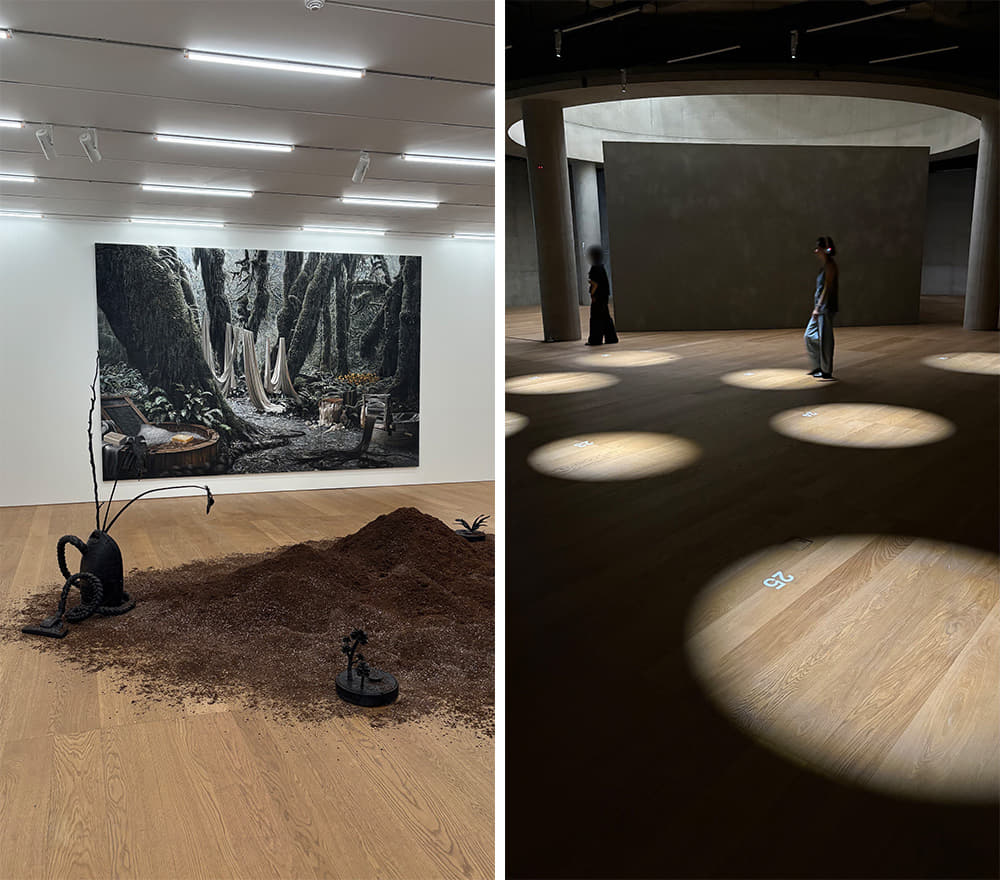
Han Sun Woo’s works—from a fossilised robot vacuum and long hairs sprouting from an antique washing machine to a large-scale painting of a cheese grater—probe deep-rooted gendered housework in Asian culture as well as technological development. Visitors can also walk through an underground bunker and listen to sound works by Kwon Byung-jun, composed of recordings collected in Jeju. The 25 audio pieces include songs from Yemeni refugees, soundscapes from Gyodong Island near North Korea, and lullabies from multicultural families. I found myself wandering, completely losing track of time.
SongEun
 441, Dosan-daero, Gangnam-gu, Seoul
441, Dosan-daero, Gangnam-gu, Seoul
 Mon-Sat 11:00 - 18:30 /Closed on Sundays
Mon-Sat 11:00 - 18:30 /Closed on Sundays
 Subway Suin Bundang Line Apgujeong Rodeo Station Exit 4, 637m
Subway Suin Bundang Line Apgujeong Rodeo Station Exit 4, 637m
Platform-L Contemporary Art Center: Under Layer Debut (on view until November 9, 2025)
Gangnam isn’t where you expect to find a non‑profit art centre championing experimental practice, but Platform‑L has been rewriting that script since 2016. Backed by the Taekwang Cultural Foundation, it carved out a niche as Seoul’s hub for interdisciplinary art, where exhibitions bleed into performance, sound, and live events. Its flagship PLAP (Platform‑L Live Arts Program) has long been a laboratory for process‑based work—artists and audiences sharing the same air as ideas take shape.
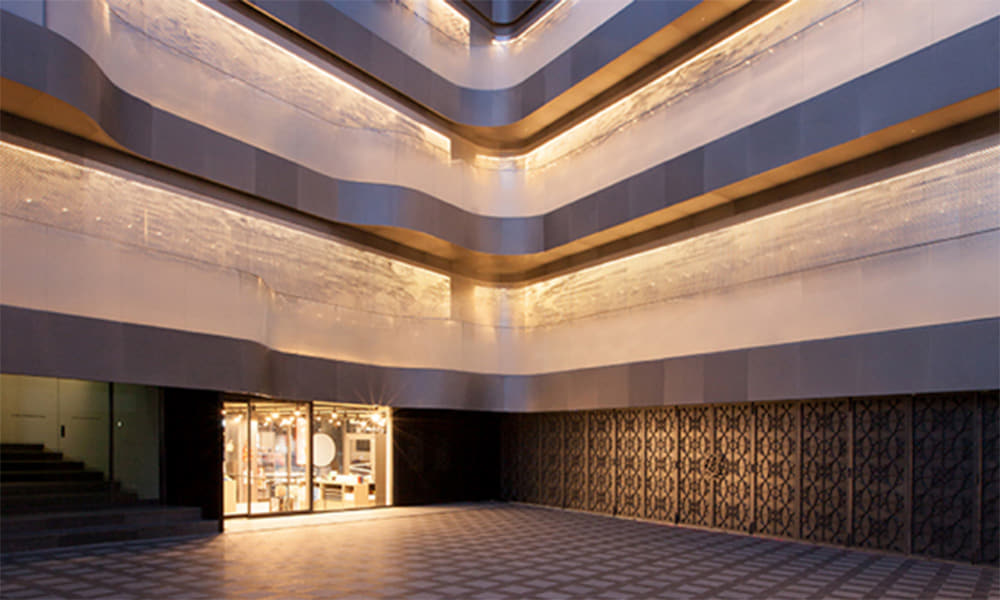
This autumn, the center adds a new layer—literally. PS Under Layer, a ground‑floor project space, launches with a clear mission: to support mid‑career artists while keeping the spirit of experimentation alive. “We wanted a space that could change every two or three months and help sustain artists’ practices,” says Naree Kim, head of management. “Sales matter for survival, but so does flexibility. And having an art centre like this in the middle of Gangnam is unusual—the accessibility is a huge advantage.”
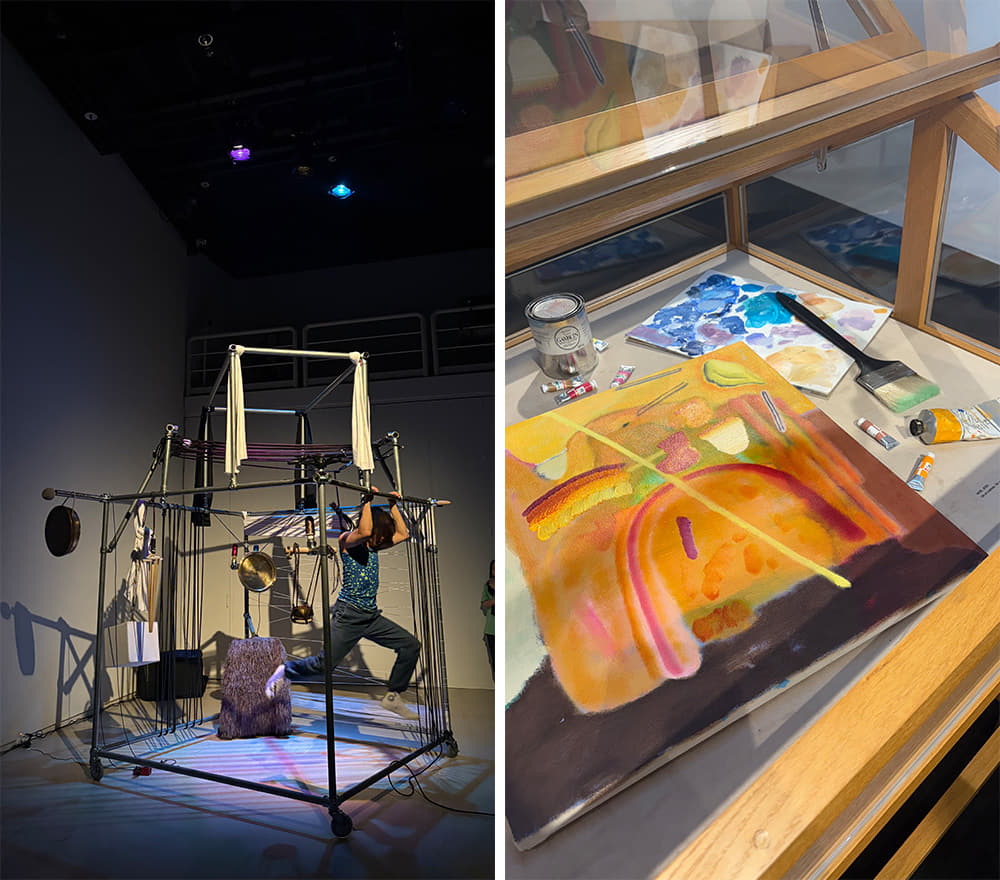
The inaugural show, Park Kyung Ryul’s Undefined Rhythm (3 September – 9 November 2025), feels like a manifesto for the space. Twenty paintings pulse with irregular cadence—brushwork that seems to breathe, resisting fixed tempo. Two limited‑edition art scarves extend the work into something tactile and wearable, a nod to Platform‑L’s cross‑disciplinary DNA.
September showed me that Seoul’s art scene isn’t about imitation; it’s about synthesis. From hanok‑lined alleys to Gangnam’s architectural façades, the city holds on to what is deeply Korean while folding in global ideas, new media, and hybrid formats. As Jungmin Lee from Platform-L put it, “In the end, what Koreans do best is preserving what is uniquely Korean while continuously integrating other fields to create entirely new genres—and that carries enormous significance.” That’s why the wave doesn’t break when the fairs leave; it keeps building, reshaping itself with every season in these neighbourhoods.
